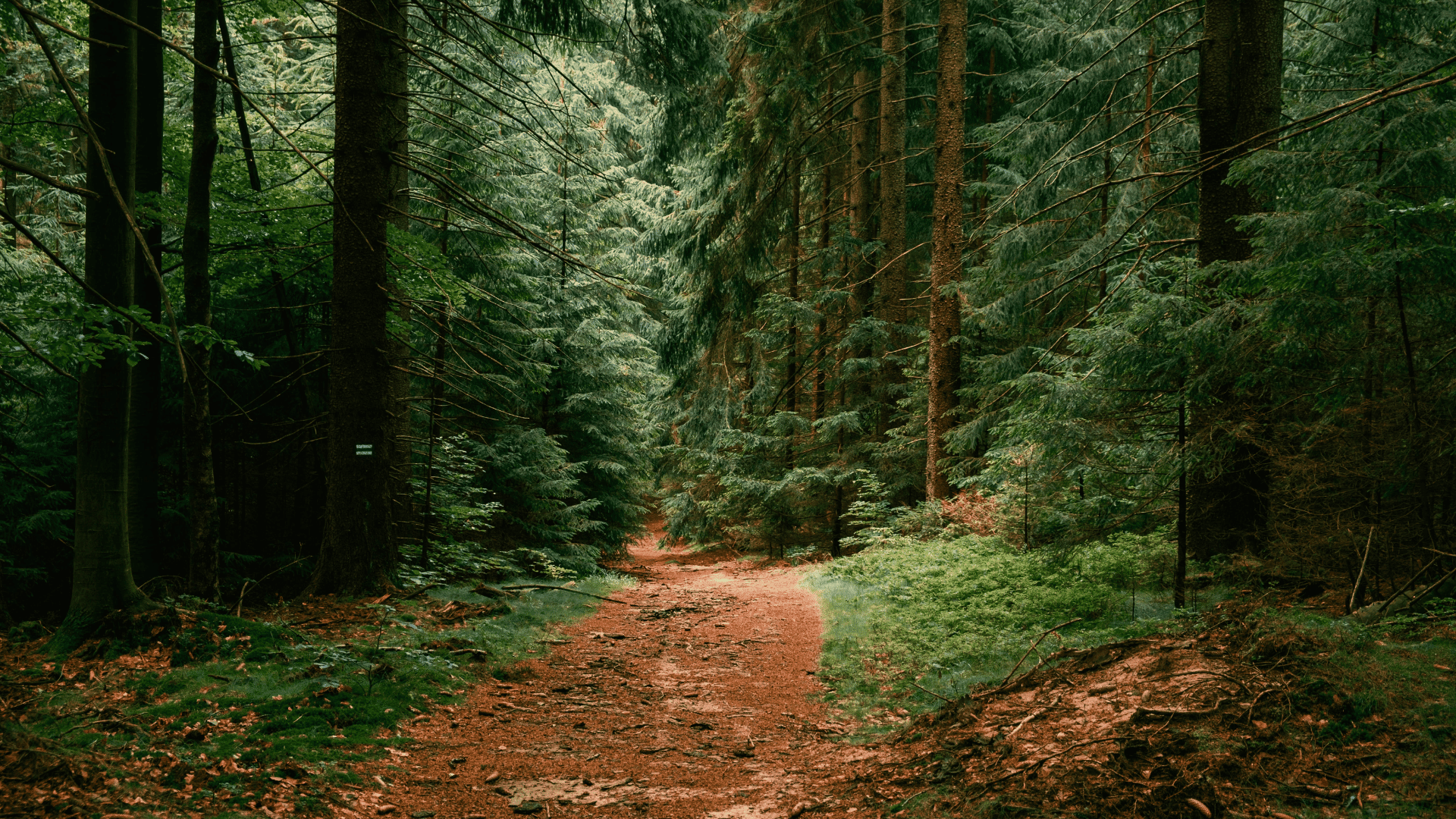The winning photos from the Wildlife Photographer of the Year 2024 competition were recently announced. They highlight unique perspectives, landscapes, animals, and conservation issues.
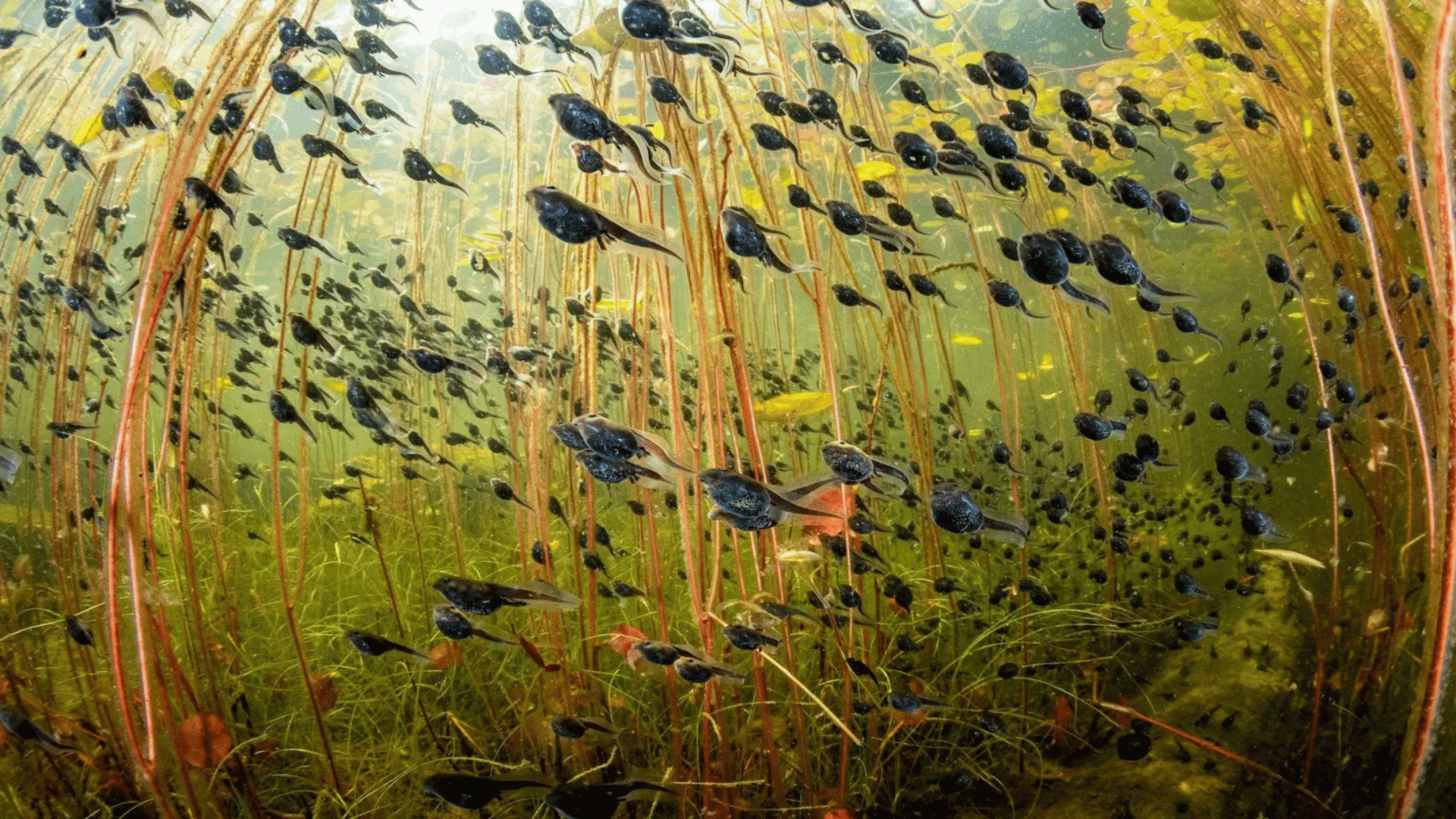
A snapshot of wriggling toad tadpoles beneath floating lily pads in Cedar Lake, Canada, earned Shane Gross the title of Wildlife Photographer of the Year. Capturing the photo titled “The Swarm of Life” required Gross to snorkel carefully for hours through carpets of lily pads, attempting to avoid disturbing the layers of silt and algae.
“Wetlands can be stunningly beautiful and badly need our protection,” says Gross, a Canadian marine conservation photojournalist, “They do so much for us that most people are oblivious to,” such as protecting cities from floods. With all the disasters going on around the world, it’s long overdue for us to see nature’s value and act accordingly.”
Within four to twelve weeks after hatching, these little tadpoles begin transforming into toads, with only about 1% making it to adulthood.
“The challenge was to get the camera-to-subject distance just right and light them well enough to have them pop off the colorful background,” he told National Geographic.
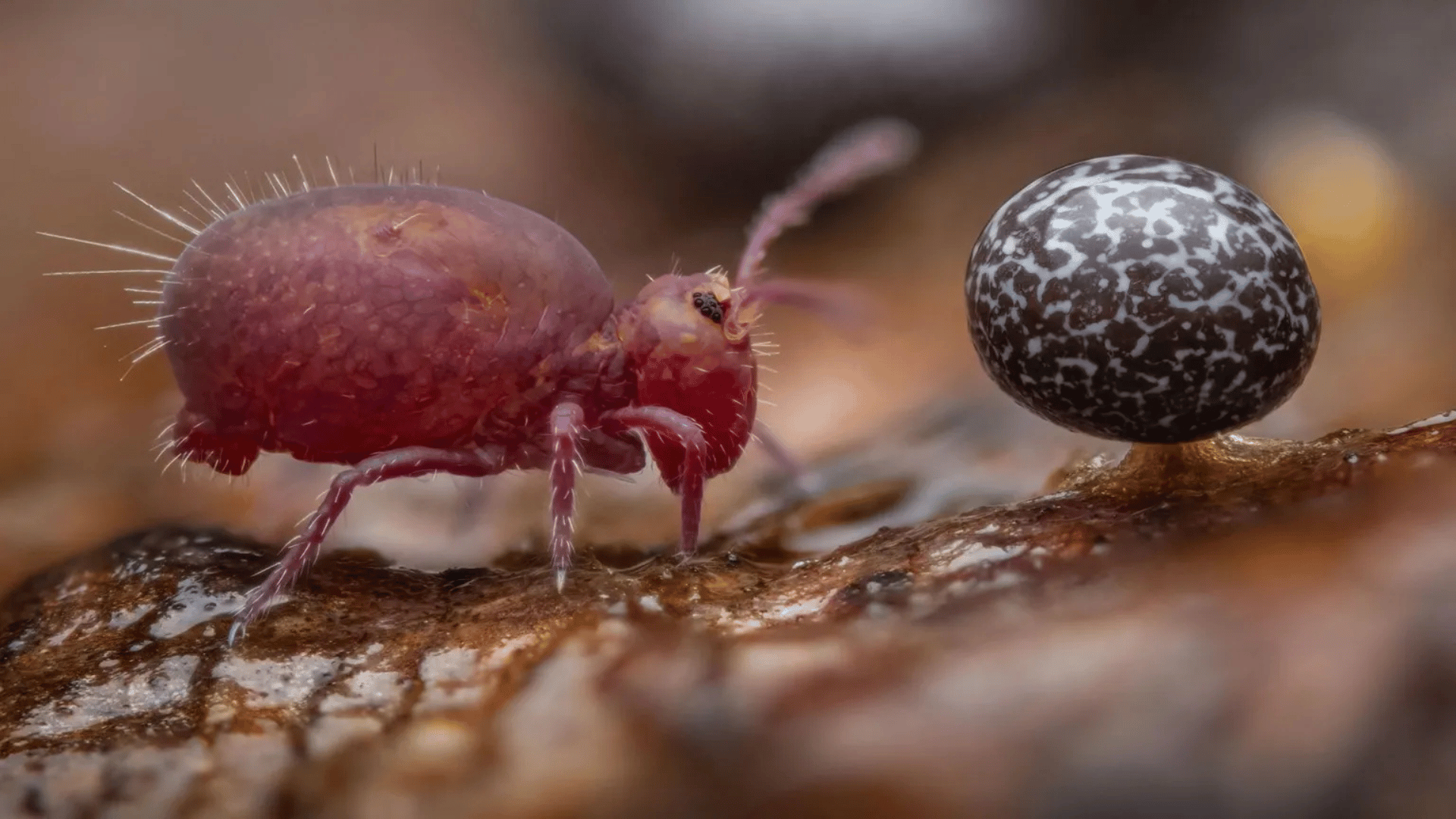
Alexis Tinker-Tsavalas from Germany won the junior grand prize and the 15-17-year-old category. He was also named Young Wildlife Photographer of the Year for his photo “Life Under Dead Wood,” which features fruiting slime mold alongside a tiny, energetic springtail.
“I think a lot of people don’t know that these things even exist,” Alexis said. “If people learn more through my images, I feel like that’s one of the biggest goals for me, to just show this tiny world that a lot of people don’t really get to see, in a different light.”
These miniature springtails, which are under two millimeters long, can be found alongside slime molds worldwide, consuming microorganisms and aiding soil health. Capturing the photo required working swiftly, as the springtails can leap several times their body length in the blink of an eye. The final image utilized a technique called focus-stacking, combining 36 images into one photo.
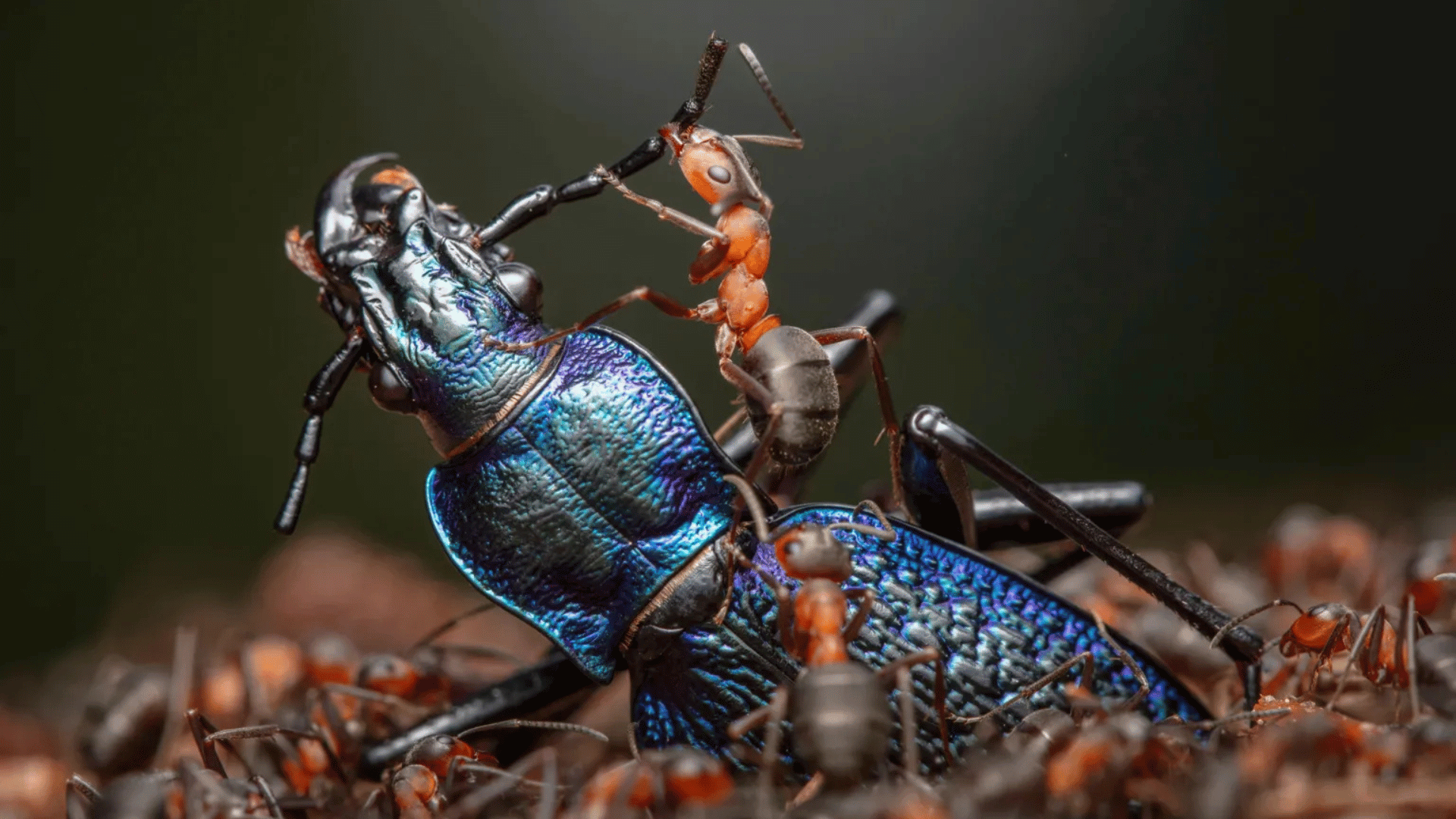
German wildlife photographer Ingo Arndt won an award in the Behavior: Invertebrates category for his image titled “The Demolition Squad,” which showcases red wood ants dismembering a much larger blue ground beetle.
Wood ants are known for working together to take down much larger insects and invertebrates to meet their protein needs. Arndt hopes to highlight the species and their environmental benefits through his work.
“Wood ants are very helpful for an intact ecosystem. For example, they kill a lot of pest insects when they appear in masses and protect the forest where they live,” he says.
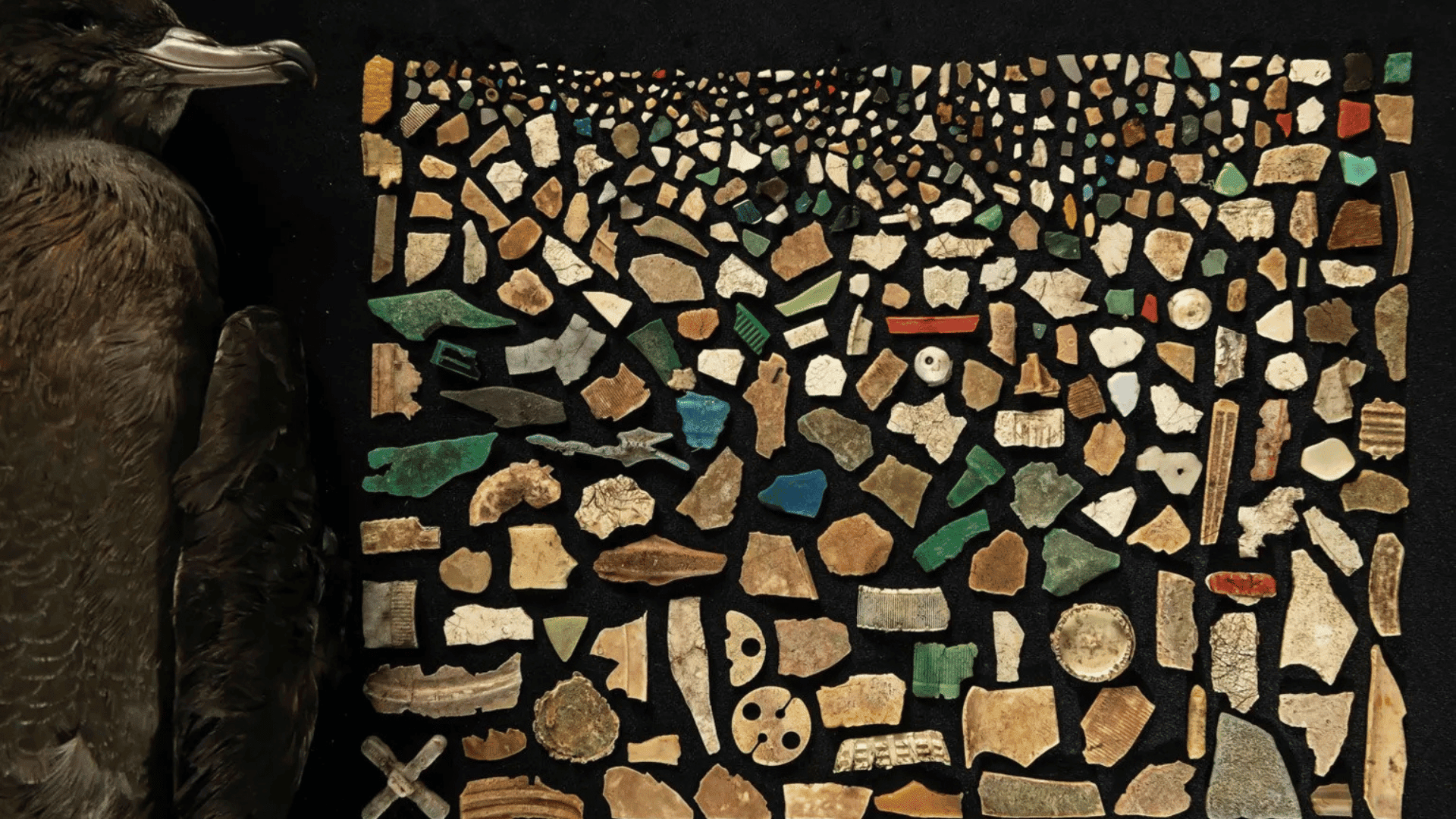
The exhibition featured several additional images, each highlighting unique animals and conservation issues, from lynxes to plastics removed from animals. The annual exhibition dedicated to the WPY competition opens at the Natural History Museum and runs through June 29, 2025.







